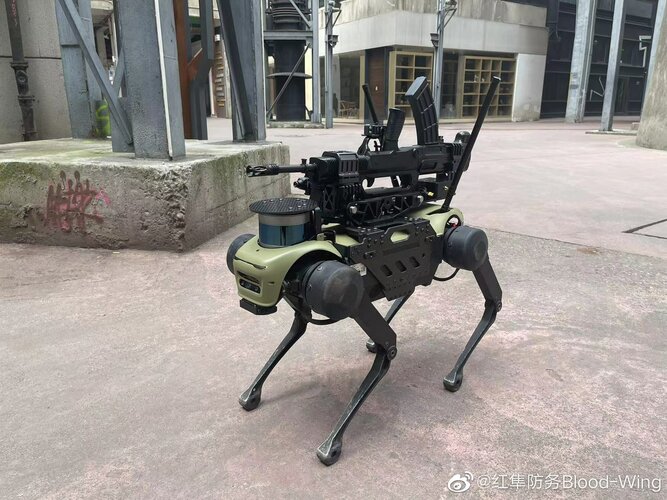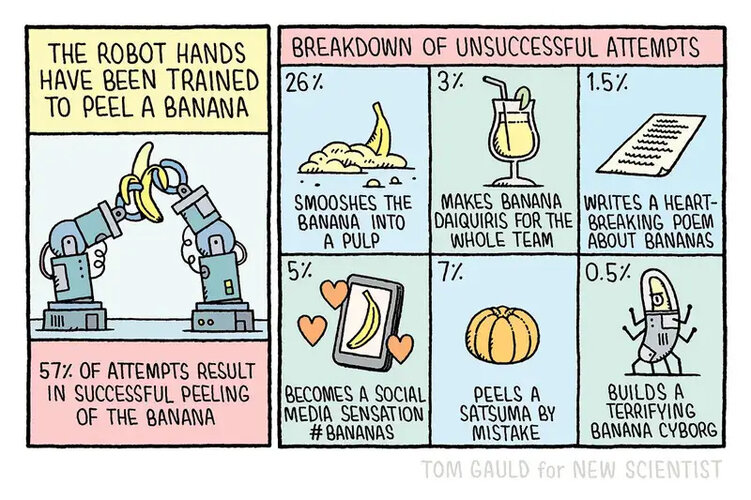You are using an out of date browser. It may not display this or other websites correctly.
You should upgrade or use an alternative browser.
You should upgrade or use an alternative browser.
Robotics - General News
- Thread starter bobbymike
- Start date
- Joined
- 9 October 2009
- Messages
- 21,973
- Reaction score
- 13,622
For transport through apocalyptic wastelands in the near future of course. Presumably the production models will have some form of biomass converter for field expedient refuelling. 
Rhinocrates
ACCESS: Top Secret
- Joined
- 26 September 2006
- Messages
- 3,053
- Reaction score
- 7,780
Goat or emu? Hmmm...
View: https://www.youtube.com/watch?v=6myoC_un7Gg&ab_channel=NewScientist
Seriously, the key feature here is energy recovery using pseudo-tendons. I would have thought that Boston Dynamics would have come up with that.
Seriously, the key feature here is energy recovery using pseudo-tendons. I would have thought that Boston Dynamics would have come up with that.
Last edited:
- Joined
- 9 October 2009
- Messages
- 21,973
- Reaction score
- 13,622

Robot Truckers Could Replace 500K U.S. Jobs
Robot Truckers Could Replace 500K U.S. Jobs
Slashdot thread on the story:

Self-Driving Trucks Could Replace 90% of Human Long-Distance Truckers, Finds Study - Slashdot
There are already several startups focused on replacing long-haul freight trucks with self-driving trucks, reports Bloomberg — and the potential is huge. (Alternate URLs here and here.) The short trip from a factory or distribution center to an interstate is usually far more complicated than...
tech.slashdot.org
Rhinocrates
ACCESS: Top Secret
- Joined
- 26 September 2006
- Messages
- 3,053
- Reaction score
- 7,780
Rhinocrates
ACCESS: Top Secret
- Joined
- 26 September 2006
- Messages
- 3,053
- Reaction score
- 7,780
Rhinocrates
ACCESS: Top Secret
- Joined
- 26 September 2006
- Messages
- 3,053
- Reaction score
- 7,780
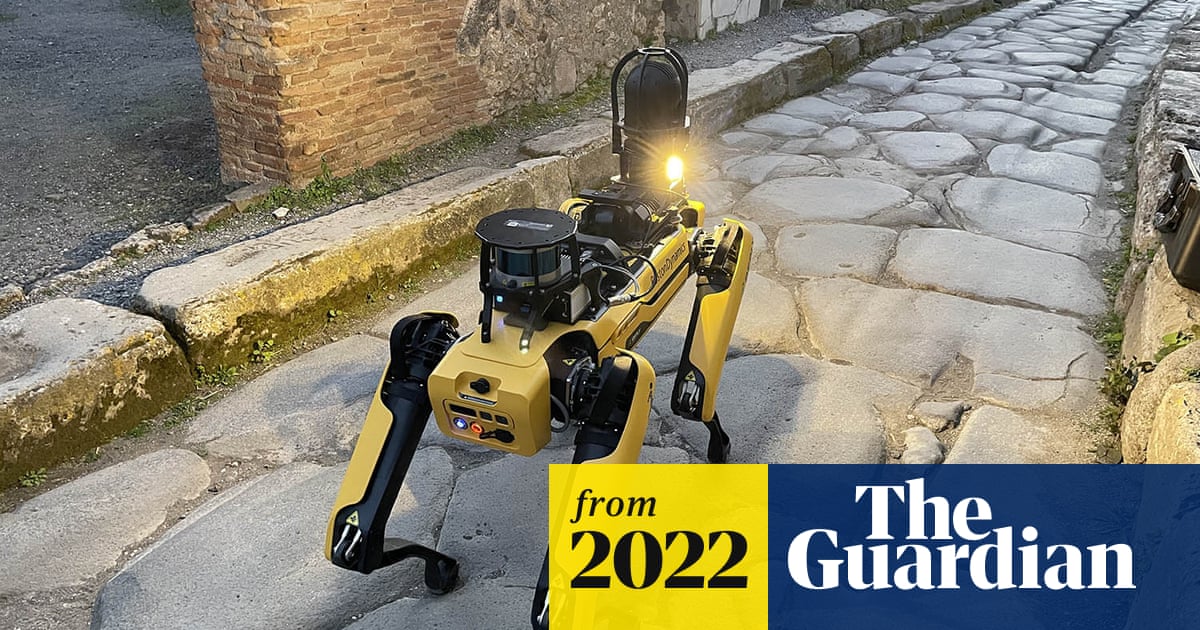
Robot dog called in to help manage Pompeii
Spot will be used to identify safety and structural issues including tunnels dug by relic thieves
Spot, made by the US-based Boston Dynamics, is capable of inspecting even the smallest of spaces while “gathering and recording data useful for the study and planning of interventions”, park authorities said.
The aim, they added, is to “improve both the quality of monitoring of the existing areas, and to further our knowledge of the state of progress of the works in areas undergoing recovery or restoration, and thereby to manage the safety of the site, as well as that of workers.”
Until Spot came along, no technology of its kind had been developed for archaeological sites, according to Gabriel Zuchtriegel, the director of Pompeii archaeological park.
Rhinocrates
ACCESS: Top Secret
- Joined
- 26 September 2006
- Messages
- 3,053
- Reaction score
- 7,780
This could go in the new materials thread too.
View: https://www.youtube.com/watch?v=gUfsFVPVa08&ab_channel=NewScientist
- Joined
- 21 April 2009
- Messages
- 13,755
- Reaction score
- 7,694
Rhinocrates
ACCESS: Top Secret
- Joined
- 26 September 2006
- Messages
- 3,053
- Reaction score
- 7,780
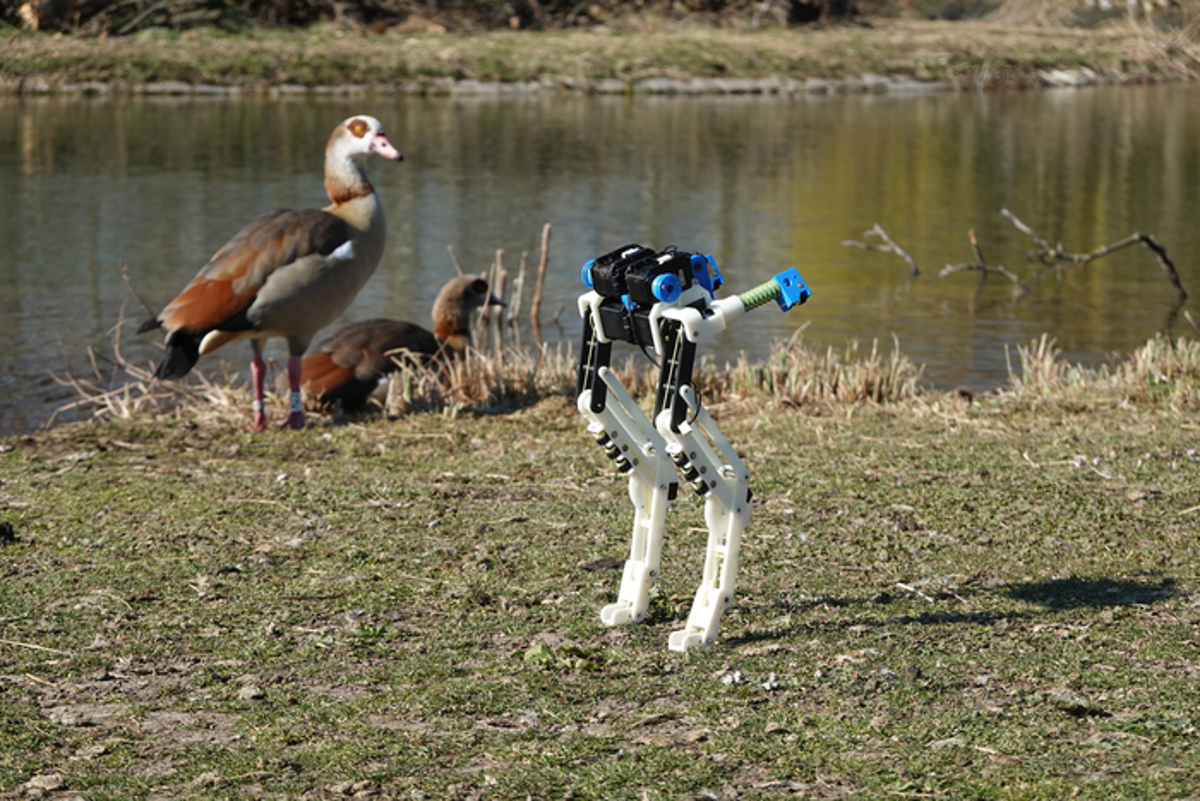
Birds Make Better Bipedal Bots Than Humans Do
A new machine called BirdBot balances walking efficiency and speed
shin_getter
ACCESS: Top Secret
- Joined
- 1 June 2019
- Messages
- 1,105
- Reaction score
- 1,484
Rhinocrates
ACCESS: Top Secret
- Joined
- 26 September 2006
- Messages
- 3,053
- Reaction score
- 7,780
Fun fact: The legs and tentacles of the Martin fighting machines in HG Wells' The War of the Worlds used something almost identical. The Martians did not use anything like the wheel or pivot, instead:
Almost all of the joints of the machinery present a complicated system of sliding parts moving over small but beautifully curved friction beatings. And while upon this matter of detail, it is remarkable that the long leverages of their machines are in the most cases actuated by a sort of sham musculature of discs in an elastic sheath; these discs become polarized and drawn closely and powerfully together when traversed by a current of electricity. In this way the curious parallelism to animal motions, which is so striking and disturbing to the human beholder, was attained. (Book II, Chapter 2 'From the Ruined House.')
Rhinocrates
ACCESS: Top Secret
- Joined
- 26 September 2006
- Messages
- 3,053
- Reaction score
- 7,780
And more in line with the fun:

 nypost.com
nypost.com

‘Fictosexual’ man married hologram bride, but now struggles to bond with her
“Fictosexuals” are people who are sexually attracted to fictional characters.
Now I see that as an x-wing ultra-crossbow if modified....a self moving carabiner, with weak legs. Jump, drag light, then heavy lines, wedge in rock, etc. Salto is a more agile bot that could ride this as a vehicle. The Asimov shrine is moving. There should be a minimalist Starship, with area ruling...single footprint headstone at the ladder. One small circular window allows the Sun-on the longest day of the Martian year-to shine on Bradbury's portrait-and make a tiny robot dandilion bloom...
Last edited:
Rhinocrates
ACCESS: Top Secret
- Joined
- 26 September 2006
- Messages
- 3,053
- Reaction score
- 7,780
And more in line with the fun:

‘Fictosexual’ man married hologram bride, but now struggles to bond with her
“Fictosexuals” are people who are sexually attracted to fictional characters.nypost.com

William Gibson's 'Idoru': Tokyo sci-fi becomes full-blown reality
Satirical yet eerily plausible, William Gibson's "Idoru" is a complex sci-fi novel set in post-quake Tokyo that addresses the often negative impacts technology has on our lives.
- Joined
- 21 January 2015
- Messages
- 12,150
- Reaction score
- 16,351
- Joined
- 21 January 2015
- Messages
- 12,150
- Reaction score
- 16,351
Rhinocrates
ACCESS: Top Secret
- Joined
- 26 September 2006
- Messages
- 3,053
- Reaction score
- 7,780
Looks like Hyundai's serious.
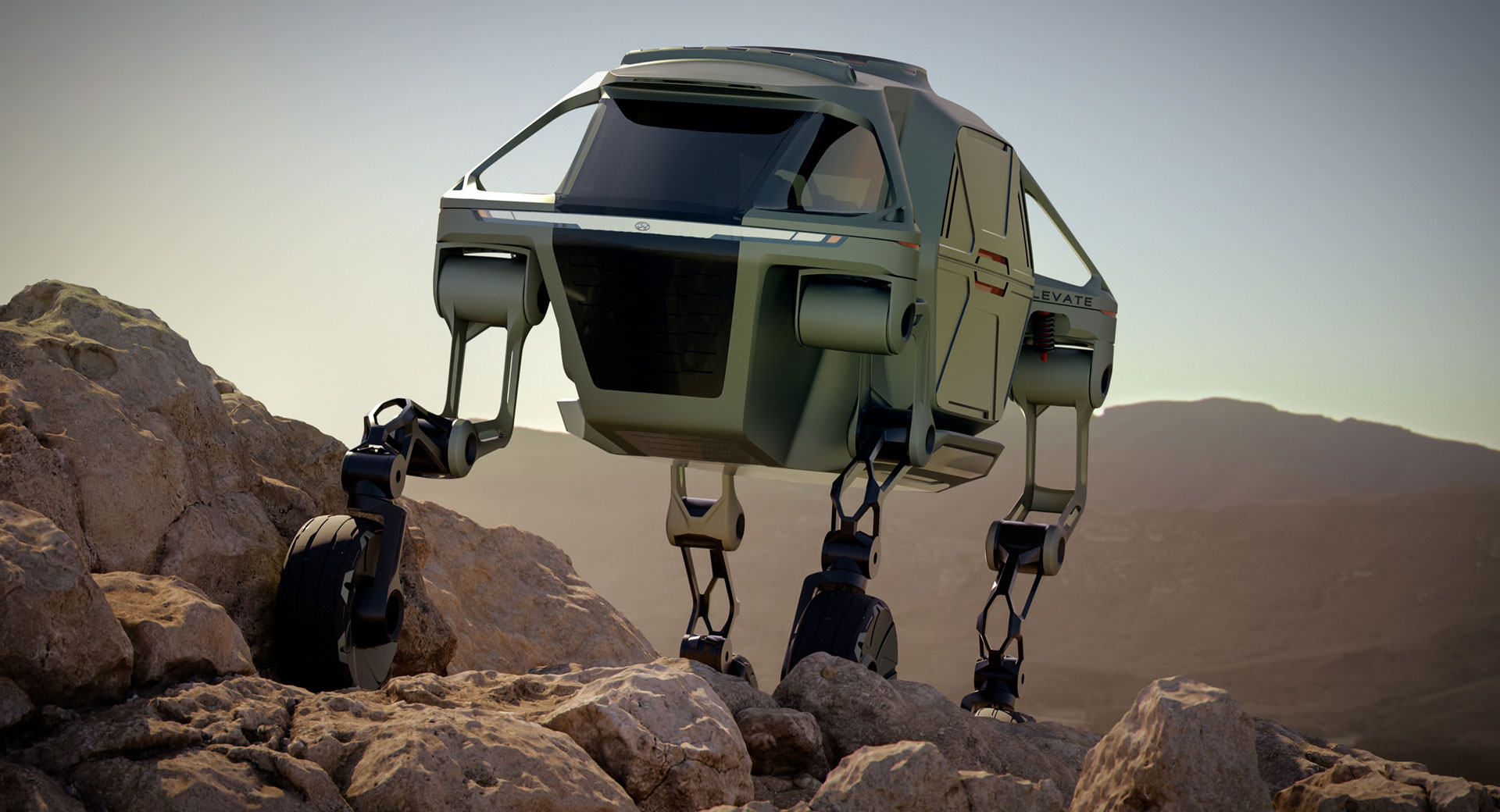
 www.carscoops.com
www.carscoops.com

Watch Out Bozeman, Hyundai's Walking Robots Are Coming To Town | Carscoops
Hyundai is investing $20 million to design and build ultimate mobility vehicles in Montana
Rhinocrates
ACCESS: Top Secret
- Joined
- 26 September 2006
- Messages
- 3,053
- Reaction score
- 7,780

AI Robot Artist Holds Exhibition Of Her Work, And Honestly The Paintings Are Great
The world's first ultra-realistic humanoid robot artist working using artificial intelligence (AI) has launched an exhibition of her (its?) work. The Ai-Da

The world's first robot artist reveals amazing new paintings in its first solo exhibition
The world's first robot artist reveals amazing new paintings in its first solo exhibition.
And...
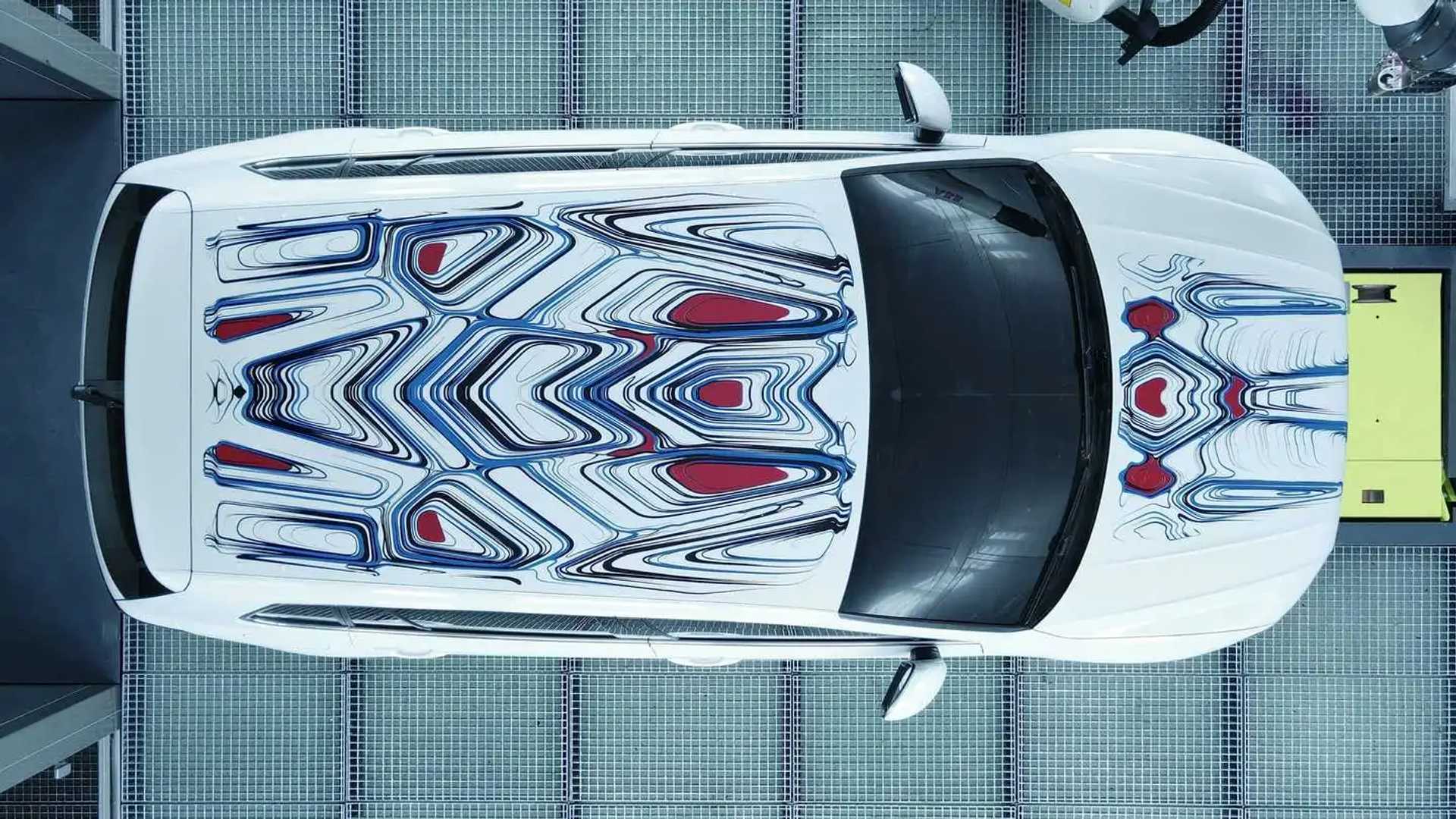
A Robot Turned This Flood Damaged SUV Into An Art Car In 30 Minutes
ABB Robotics developed a painting robot that can spray multiple colors simultaneously and with incredible precision, as seen on this art car.
While this may seem frivolous to readers of this forum, it has implications for flexible manufacturing and servicing. The application that comes immediately to mind is the creation of camouflage schemes in the field.
Rhinocrates
ACCESS: Top Secret
- Joined
- 26 September 2006
- Messages
- 3,053
- Reaction score
- 7,780
Well this is going to freak people out at dinner parties.
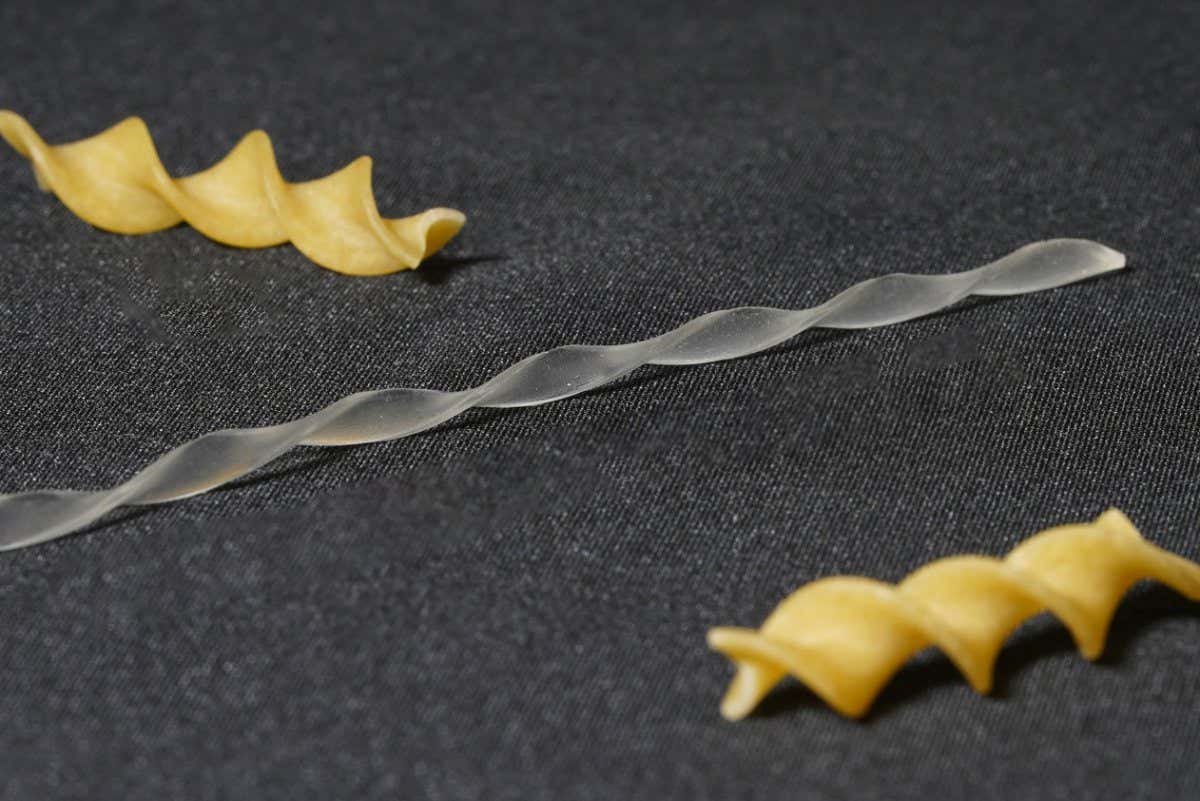
 www.newscientist.com
www.newscientist.com
The full article may be paywalled but if you reload and stop download before it fully loads you can get around that (it may take a few tries, depending on your reflexes). In any case, here's the video:
View: https://www.youtube.com/watch?v=sePdOgF4rLk&ab_channel=NewScientist

Pasta-shaped robot with no moving parts can navigate through mazes
A soft robot made from a twist of rubber can harvest heat energy and use it to roll across a variety of surfaces and even escape mazes
The full article may be paywalled but if you reload and stop download before it fully loads you can get around that (it may take a few tries, depending on your reflexes). In any case, here's the video:
Last edited:
- Joined
- 21 April 2009
- Messages
- 13,755
- Reaction score
- 7,694
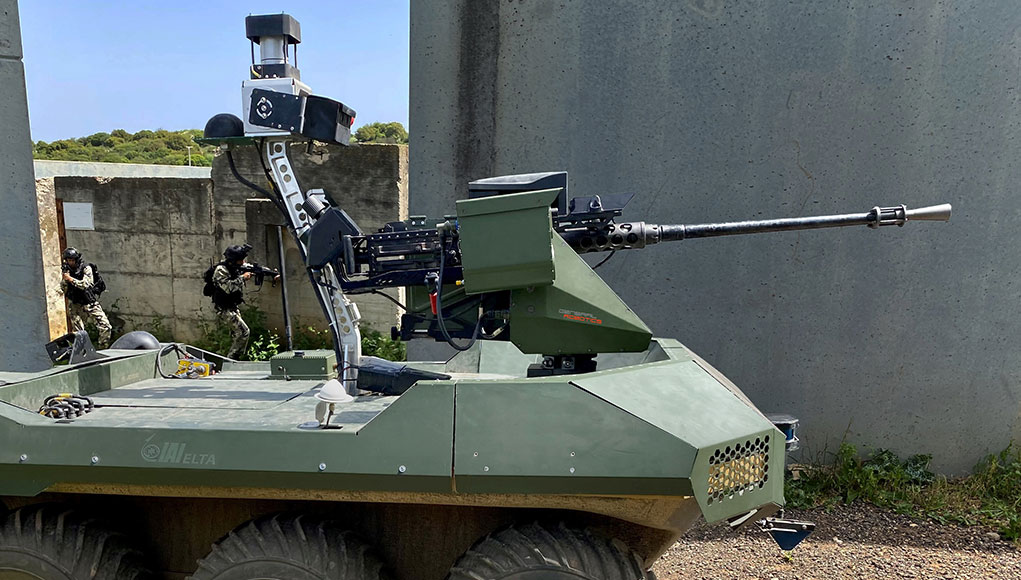
Intelligent Firepower - Defense Update:
General Robotics is introducing at Eurosatory 2022 a new version of its PITBULL RCWS equipped with Smart-AI features. With the new AI-driven capabilities, armored vehicles and unmanned platforms substantially improve situational awareness, response rate, and firepower. - Defense Update:
Rhinocrates
ACCESS: Top Secret
- Joined
- 26 September 2006
- Messages
- 3,053
- Reaction score
- 7,780
That headline...

 www.theguardian.com
www.theguardian.com

Scientists make ‘slightly sweaty’ robot finger with living skin
Japanese innovation thought to have potential to ‘build a new relationship between humans and robots’
They can keep the tapewormsWell this is going to freak people out at dinner parties.

Pasta-shaped robot with no moving parts can navigate through mazes
A soft robot made from a twist of rubber can harvest heat energy and use it to roll across a variety of surfaces and even escape mazeswww.newscientist.com
The full article may be paywalled but if you reload and stop download before it fully loads you can get around that (it may take a few tries, depending on your reflexes). In any case, here's the video:
View: https://www.youtube.com/watch?v=sePdOgF4rLk&ab_channel=NewScientist
- Joined
- 16 December 2010
- Messages
- 3,810
- Reaction score
- 4,199

Google engineer put on leave after saying AI chatbot has become sentient
Blake Lemoine says system has perception of, and ability to express thoughts and feelings equivalent to a human child
And a discussion of this news...

Is LaMDA Sentient? - NeuroLogica Blog
It sounds like the plot of a feel-good science fiction movie - an engineer discovers that an AI program he was working on has crossed over the line to become truly sentient. He is faced with skepticism, anger, threats from the company he is working for, and widespread ridicule. But he knows in...
theness.com
shin_getter
ACCESS: Top Secret
- Joined
- 1 June 2019
- Messages
- 1,105
- Reaction score
- 1,484
Rhinocrates
ACCESS: Top Secret
- Joined
- 26 September 2006
- Messages
- 3,053
- Reaction score
- 7,780
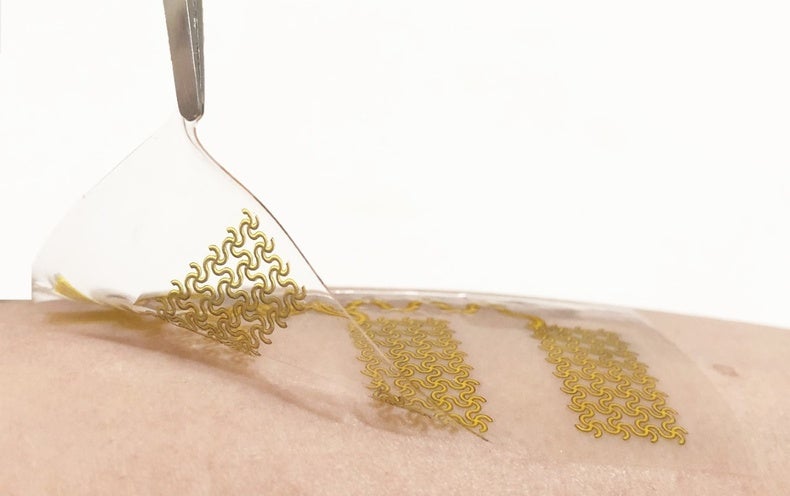
Electronic Skin Lets Humans Feel What Robots Do—And Vice Versa
An integration of soft materials, sensors and flexible electronics is bringing robotic “skin” closer than ever to reality
Human skin is soft and stretchy and has millions of nerve endings that sense heat and touch. This makes it a superb instrument for detecting and responding to the outside world. Engineers have been working to reproduce these abilities in a synthetic version for the past 40 years, but such attempts have always fallen fall short of the versatility and adaptability of living skin. Now, however, new research is adding more abilities and complexities to bring this field closer to its ultimate goal: an electronic skin, or e-skin, with uses ranging from covering robots to sticking wearable devices onto humans. One day, these devices may even let humans remotely control robots and “feel” the signals they detect.
Rhinocrates
ACCESS: Top Secret
- Joined
- 26 September 2006
- Messages
- 3,053
- Reaction score
- 7,780
- Joined
- 21 April 2009
- Messages
- 13,755
- Reaction score
- 7,694
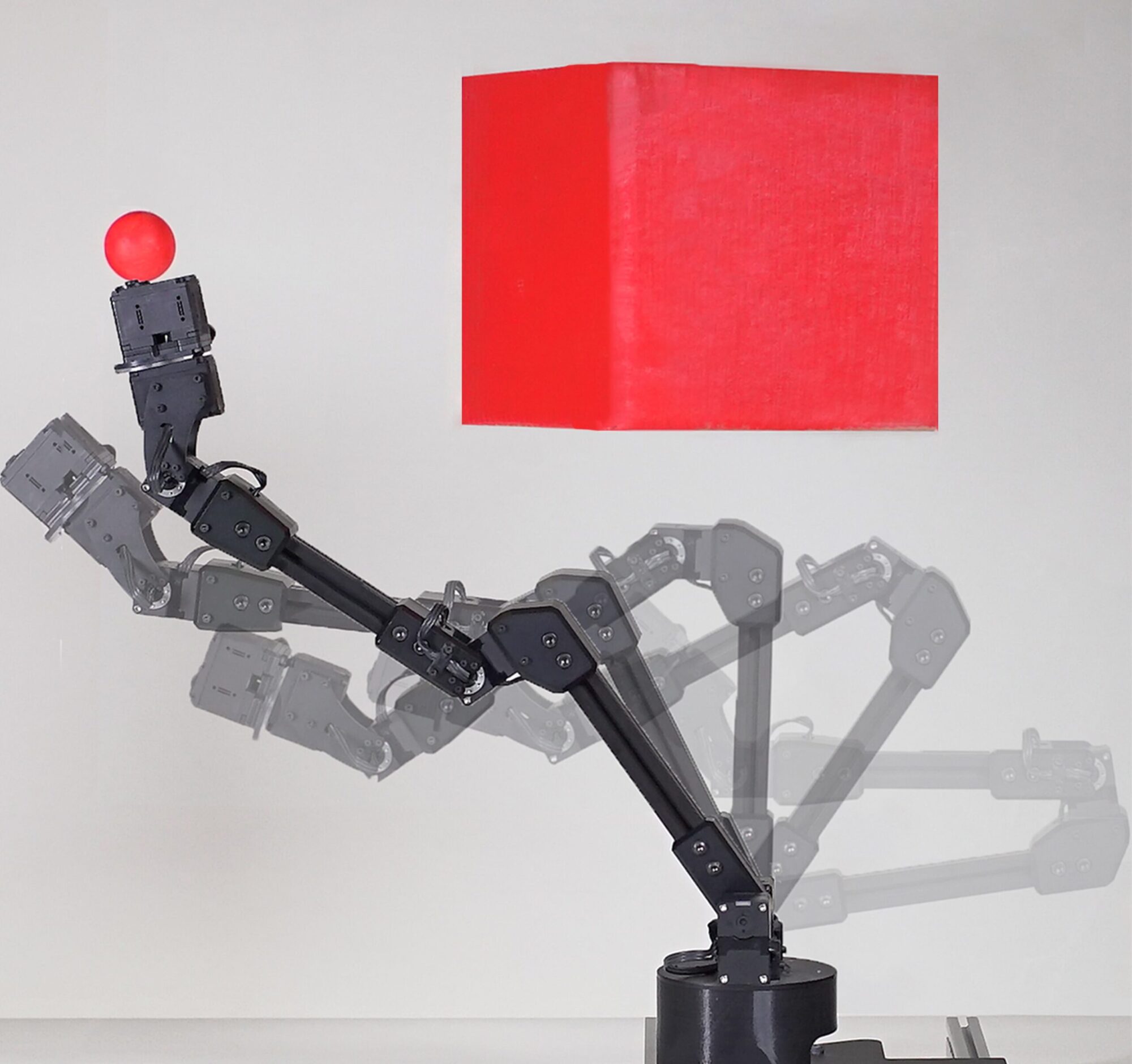
A self-aware robot taught itself how to use its body
Engineers have created a robot arm that could learn, through practice, what its own form can do, hinting at future self-aware machines.
 www.popsci.com
www.popsci.com
Rhinocrates
ACCESS: Top Secret
- Joined
- 26 September 2006
- Messages
- 3,053
- Reaction score
- 7,780
shin_getter
ACCESS: Top Secret
- Joined
- 1 June 2019
- Messages
- 1,105
- Reaction score
- 1,484
Language models are pretty general "intelligence" and can be used in robotics domain as well
- Joined
- 21 April 2009
- Messages
- 13,755
- Reaction score
- 7,694
shin_getter
ACCESS: Top Secret
- Joined
- 1 June 2019
- Messages
- 1,105
- Reaction score
- 1,484
Regarding the post above by @bobbymike (something not related to himself), I would suggest everybody thinking that this is progress to take a minute looking with attention at their own girlfriend (since men are not the subjects of such ridiculous and rather freaking mysogynistic endeavors).
Really that's how you see a woman?!
Really that's how you see a woman?!
Last edited:
Rhinocrates
ACCESS: Top Secret
- Joined
- 26 September 2006
- Messages
- 3,053
- Reaction score
- 7,780
That’s not all those arms can do:
I almost lost a pinky at that age to a door…
Poor kid….that’s how my hard luck started and hasn’t let up since.
I almost lost a pinky at that age to a door…
Poor kid….that’s how my hard luck started and hasn’t let up since.
Phys.org talked about robots that understand their own position in space, which may improve aim. Now there is an article that claims "Roboticists discover alternative physics." Click-bait about some artifact/hiccup? Or more? Today's article was "Human-like features in robot behavior" --- that beats dummies in diamond lanes.
Last edited:
Similar threads
-
-
Discussion: is it going to happen the snipers trap in more danger on battlefield?
- Started by li zhuo peng
- Replies: 7
-
-
Artificial intelligence manipulate multiple mortar systems fire and reload shells at the same time.
- Started by li zhuo peng
- Replies: 28
-
SAC News 50 Years Ago this month from the Air Force Association
- Started by bobbymike
- Replies: 1





